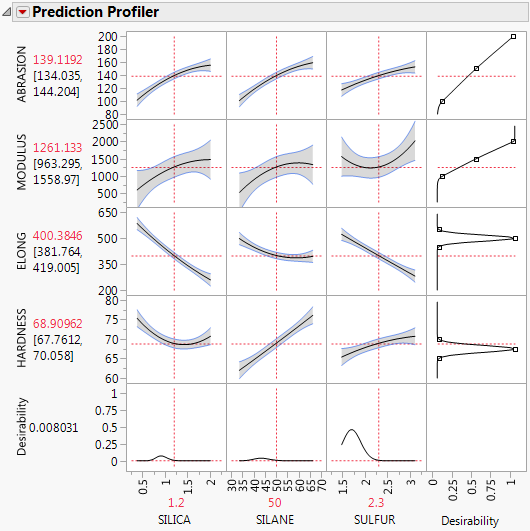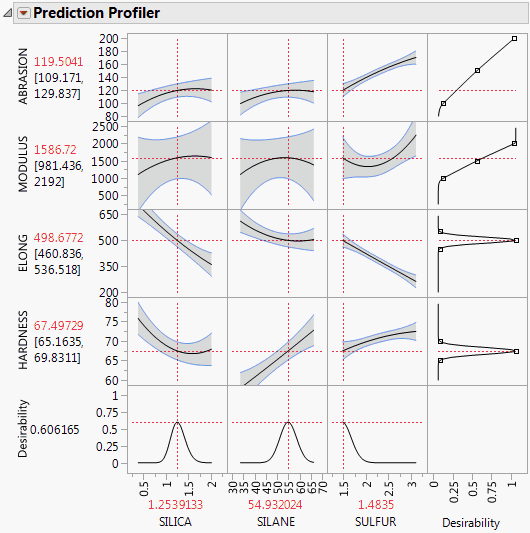Example of Desirability Profiling for Multiple Responses
A desirability index becomes especially useful when there are multiple responses. The idea was pioneered by Derringer and Suich (1980), who give the following example. Suppose there are four responses, ABRASION, MODULUS, ELONG, and HARDNESS. Three factors, SILICA, SILANE, and SULFUR, were used in a central composite design.
The desirability functions are as follows:
1. Select Help > Sample Data Library and open Tiretread.jmp.
2. Click the green triangle next to RSM for 4 Responses to run the script.
This script defines a model for the four responses with a full quadratic response surface. The summary tables and effect information appear for all the responses, followed by the prediction profiler shown in Figure 3.18.
Figure 3.18 Prediction Profiler for Multiple Responses before Optimization
Note the following about the desirability functions:
– Maximum ABRASION and maximum MODULUS are most desirable.
– ELONG target of 500 is most desirable.
– HARDNESS target of 67.5 is most desirable.
3. Select Optimization and Desirability > Maximize Desirability from the Prediction Profiler red triangle menu to maximize desirability.
Figure 3.19 Prediction Profiler after Optimization

